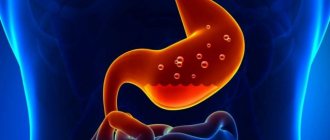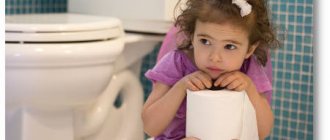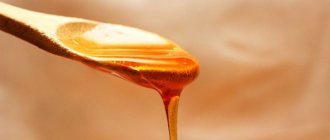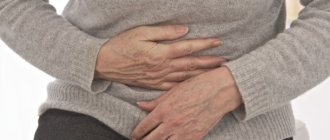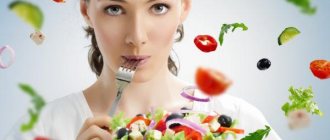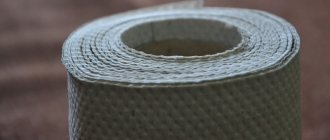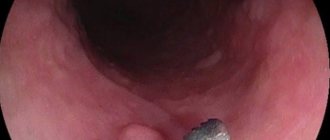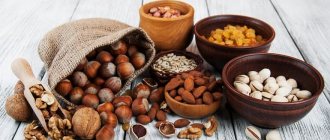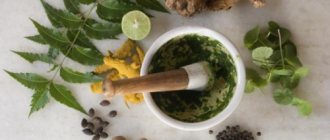Treatment of chronic colitis with diet
Treatment of chronic colitis with diet has long established itself as one of the most effective. So, if the disease is infectious in nature, then it is necessary to have the correct effect on microorganisms. To do this, you need to eat at least 6-7 times a day. In this case, it is worth using the so-called fourth diet.
It consists of crackers made from wheat and rye bread, low-fat soups, semolina and rice porridge. You should pay attention to pearl barley, lean meat and fish, and soft-boiled eggs. As for drinks, green tea and coffee are allowed. If serious inflammation begins, the doctor may prescribe a fasting diet.
In any case, colitis must be eliminated with proper nutrition. This will relieve unnecessary irritation and soothe the intestinal mucosa. There is a certain type of nutrition. Moreover, there are special diets and ways to eliminate the problem. Detailed information will be provided below.
What to consider when creating a menu
The task of the diet for colitis is to provide nutrition for impaired digestion, that is, mechanical and chemical sparing of the digestive tract, reducing the inflammatory reaction.
The main task is to eliminate fermentation and putrefaction in the intestines and normalize its functions and the functions of other organs of the gastrointestinal tract.
According to the Pevzner diet table, for colitis, diet No. 4 is prescribed in case of a sharp exacerbation of the disease or No. 4b in case of a subsiding process or in case of a mild exacerbation.
The treatment table for colitis has a reduced energy value (limiting the consumption of fats and carbohydrates, but with a normal amount of protein), and is equal to 2170-2480 Kcal.
Diet composition:
- protein content – 85-90g, of which 60-65% are animal;
- fat content 70-80g;
- carbohydrates 300-350 g;
- table salt – 8-10g.
Diet
The diet for colitis of any stage is fractional, 5-6 times a day and in small portions. Due to this principle of diet, the mechanical load on the digestive tract, and, in particular, on the intestines, is reduced, and food is easier to digest and assimilate. The last meal should be no later than 3 hours before bedtime.
Food temperature
Dishes should not be too cold or hot so as not to irritate the gastrointestinal mucosa. The optimal food temperature is 15-60°C.
Cooking
All dishes should be boiled, steamed or baked, but without a hard crust. In addition, food is served pureed or chopped. This way, the intestines have time to break down foods into nutrients that are absorbed into the blood - this achieves mechanical sparing.
Plant fiber
The amount of plant fiber in the diet for colitis is reduced, since, firstly, it does not linger in the intestines, that is, it increases the frequency of bowel movements (and colitis is usually accompanied by diarrhea), and, secondly, it irritates the intestinal mucosa, which so inflamed.
Salt
The salt content in food for colitis is slightly reduced, to 10g. Excessively salty foods irritate the digestive tract.
Free liquid
Free fluid intake should be at least 1.5-2 liters per day. In this way, hydrochloric acid is diluted in the stomach and the volume of fluid lost during diarrhea is replenished.
Alcohol
Alcohol should be avoided, especially during periods of exacerbation of the disease. Alcohol irritates the mucous membrane of the stomach and intestines, aggravates inflammation in the colon, stimulates the production of pancreatic enzymes and the release of bile, which aggravates the disease.
Nutrition when your condition improves
A strict diet for intestinal colitis during an exacerbation period contributes to a fairly rapid improvement in the condition. As a result, the diet gradually begins to expand.
So, it is permissible to eat not only boiled and steamed, but also baked dishes (be sure to remove the crust). The following can be gradually added to the list of permitted products:
- ripe tomatoes and potatoes in limited quantities;
- products made from lean dough (buns, pies with cottage cheese, fruit, eggs or meat);
- pasta as an additive to soups;
- ripe fruits and berries, peeled and pitted;
- weak coffee;
- sweets such as marshmallows, marshmallows, marmalade, preserves and jams.
As the condition improves, it is recommended to expand the diet by consuming small quantities of sausages, vegetable oil and other forbidden foods. This is not systematic, but is only aimed at ensuring that the intestines are ready to process any food.
Diet menu according to disease types
For acute colitis, after a daily fast, table 4a is prescribed.
Breakfast: liquid buckwheat porridge with water, 1 piece of white bread, oat jelly.
Lunch: rosehip infusion.
Lunch: low-fat chicken broth with pureed boiled chicken fillet (for constipation) or slimy rice water (for colitis accompanied by diarrhea), dried fruit jelly.
Afternoon snack: soufflé made from pureed cottage cheese.
Dinner: 100 grams of boiled pureed pollock fillet, blueberry decoction.
As the symptoms of colitis subside (on days 5-6), they move on to treatment table 4 b, and the menu is expanded to include vegetables, biscuits, fish and meat soups, and mild varieties of cheese.
Breakfast: liquid mashed potatoes (for patients prone to constipation) or rice porridge (for diarrhea) and a portion of boiled grated pike fillet, tea.
Lunch: 100 grams of fresh low-fat grated cottage cheese.
Lunch: buckwheat puree soup with pureed carrots and zucchini in lean veal broth, meat soufflé, 20 grams of unsalted and low-fat cheese, jelly.
Afternoon snack: steamed protein omelette.
Dinner: turkey fillet quenelles, pumpkin and carrot puree, rosehip infusion.
When colitis is in remission, they switch to diet 4c. Therapeutic nutrition is a complete, balanced diet, with the regular addition of permitted foods: lean ham, soaked herring, small portions of fruits, berries and fruit juices. It is permissible to serve meat and fish in pieces, and not in chopped or grated form.
All new products are introduced gradually, in small doses, observing the body's reaction to them.
For colitis with constipation, add vegetable oils and more fermented milk drinks to the diet. Vegetables with fiber are acceptable in moderation. Dried fruits, bran and wholemeal rye bread are welcome.
If you are prone to diarrhea, whole milk, foods rich in fiber, any seasonings and spices, as well as increased doses of table salt are unacceptable. Preference is given to rice water and porridges, thoroughly ground food, lean meat and fish, boiled vegetables in limited quantities, and jelly.
The diet for intestinal colitis should be adjusted by the doctor as it heals. It is quite difficult to independently create a diet for this pathology, since it requires taking into account a large number of factors.
Prohibited Products
A number of restrictions characterize the diet for colitis during an exacerbation. The list of products prohibited for consumption is as follows:
- sausage and frankfurters;
- onions and garlic, as well as hot spices and herbs;
- apricots and plums in any form;
- black bread;
- fresh bread and other flour products (especially baked goods);
- borsch;
- milk soups;
- alcohol;
- pickled and smoked products;
- whole milk;
- carbonated drinks;
- fried foods;
- coffee and chocolate;
- pasta;
- rich broths;
- fatty fish and meats;
- pearl barley;
- peas, beans and other legumes;
- honey;
- concentrated juices.
Nuances of the menu for chronic colitis
What diet is most effective for chronic colitis? For this disease, nutrition must be special. It is important to consume plenty of vitamins that will ensure normal bowel function. Under no circumstances should you abuse enemas and laxatives. Everything can be adjusted with the help of nutrition.
It is advisable to eat 6-7 times a day. The intestines should not be irritated by dry and solid foods. It is recommended to pay attention to porridge. In case of severe exacerbation, the volume of carbohydrates should not exceed 300 grams per day. Diets during the acute period and subsiding differ significantly.
With nonspecific ulcerative colitis, complete exclusion of milk and dairy products from the patient’s diet may well lead to a complete or partial cure of the disease. Therefore, it is worth holding off on consuming fermented milk products. If the colitis is chronic, then protein stool will help. To do this, you need to consume no more than 150 grams of protein per day. The patient’s diet should not contain sweets and flour products. Vegetables and fruits are taken pureed or boiled. Mineral water is an excellent addition to any diet. For example, Essentuki.
Food should not contain irritating seasonings. The diet should include sufficiently high-calorie, but at the same time easily digestible foods. Food must be steamed. All smoked meats should be excluded. If functional diarrhea is observed, it is better to give preference to animal protein products. But whole milk should be excluded. Plant foods should be heat treated. For spastic constipation, the same amount of animal protein and fiber is consumed. With atonic constipation there is a lot of fiber. You should pay attention to fruit and vegetable juices, salads, boiled vegetables, wholemeal or bran bread. Based on these data, a diet is selected. Diets No. 4 and 4a have gained particular popularity.
What foods should you avoid if you have ulcerative colitis?
If you have ulcerative colitis, you should exclude the following foods and dishes from your diet:
- flour products: pasta, pastries, cookies, cakes;
- rich, fatty and milky soups;
- fatty meats or fish;
- canned food;
- dairy products: raw, fried eggs, kefir, sour cream, milk;
- cereals: pearl barley, millet, barley;
- any snacks;
- smoked meats;
- sweets, chocolate;
- fruits and berries;
- dried fruits;
- jams, preserves;
- sauces, mayonnaise, tomato;
- any alcohol;
- spices.
The above products should be abandoned both during the acute period of the disease and during the period of remission in chronic or nonspecific ulcerative colitis. When the patient’s well-being has improved, the doctor may allow some foods from the prohibited list to be introduced into the diet, but only in small quantities.
It is necessary to follow a therapeutic diet for UC until the cause of the disease is determined and full treatment is carried out. One of the main things in dietary nutrition for ulcerative colitis is not to eat fatty, spicy, salty or smoked foods. Consumption of such products will provoke an exacerbation of the disease.
Products on the menu for chronic colitis with constipation
The diet for chronic colitis with constipation has its own characteristics and differences. Thus, the basis of nutrition is a decrease in tone and weakening of colon peristalsis. Therefore, the diet must contain foods rich in dietary fiber. Simply put, we are talking about plant fiber. The cellulose, hemicellulose, pectin and lignin they contain have the ability to absorb water and increase in volume, which accelerates the passage of feces, normalizes peristalsis and bowel movements.
Black bread made from wholemeal flour and bread with wheat bran have a pronounced laxative effect. Raw vegetables and fruits perfectly stimulate intestinal motility. Especially cabbage, beets, carrots, pumpkin, lettuce, Jerusalem artichoke and zucchini. You should pay attention to nuts, tangerines, bananas, figs, dates and prunes. Viburnum, dried apricots, prunes, fresh blackberries and black currants in any form have excellent laxative properties.
If tolerated, the diet can include herring, lemonade, fruit drinks saturated with carbon dioxide, kvass, dill, celery, parsley, lovage, bay leaf, cinnamon. Products such as honey, jams and fruit juices irritate the intestines in moderation and increase peristalsis. It is advisable to drink beetroot and carrot juice 50 ml 2 times a day.
In the morning on an empty stomach you should drink a glass of raw water at room temperature, but you need to add 10 grams of sugar and a slice of lemon. In the morning and throughout the day, you can eat beet salads with the addition of dill, parsley and a tablespoon of vegetable oil. A salad made from cabbage, carrots and sour cream has excellent properties.
Patients with constipation should exclude bread and bakery products made from premium wheat flour, hot sauces, pepper, mustard, black coffee, strong tea, chocolate, semolina porridge, and rice. The menu can be anything, but it contains only permitted products.
Menu for constipation and bloating
It is required to organize six meals a day. The menu for the week should include alternating a variety of foods that contain proteins and carbohydrates. If the disease occurs with constipation, then the patient should be given a diet that will not contribute to irritation of the intestinal tract.
Products of plant origin must be ground to a puree. Vegetables need to be boiled or steamed. This diet will help reduce cramps in the intestines. Fish and meat can only be consumed boiled.
The diet should be based on foods that contain vitamin B1. It, in turn, helps to guarantee complete nervous regulation for the intestinal tract.
The diet must certainly include foods rich in dietary fiber, that is, fiber from plants. The laxative effect is guaranteed by taking black bread made from wholemeal flour, as well as eating the following vegetables:
- Carrot;
- Beet;
- Zucchini;
- Pumpkin;
- Cabbage, etc.
Food should be at room temperature, this will provide a gentle regime for the digestive tract. For constipation and bloating, food in the form of jelly, rice porridge, beans, sweet foods, carbonated drinks, alcohol, and fried foods is prohibited.
The daily diet is divided into 5-6 meals. It is necessary to calculate equal periods of time. It is preferable to eat food at the same time so that the body gets used to it and knows when it is necessary to prepare for the activation of digestive processes.
Food should be taken slowly, chewing well. While eating, you should not be distracted by reading, watching TV, or talking. A characteristic feature of dietary nutrition for colitis with constipation is the need to increase the inclusion of fiber in the diet.
However, at first, your intestines will not be ready to accept and digest fiber. For this reason, initially all foods high in fiber should be cooked and crushed before consumption.
Diet for chronic colitis with diarrhea
The diet for chronic colitis with diarrhea should include a complete and balanced diet. The content of proteins, fats and carbohydrates is appropriate. Table salt is limited to 8-10 grams per day. Food should be exclusively boiled or steamed. Although, baked meat, vegetable and fish dishes may well be acceptable. But at the same time there should be no rough crust. The patient needs to eat 5-6 times a day.
It is allowed to eat wheat bread, dry biscuits and crackers. Soups are prepared in a weak, low-fat meat or fish broth with well-cooked cereals. Instead of cereals, vegetables can be used: potatoes, zucchini, carrots, pumpkin and cauliflower.
Shown are dishes made from lean meats and poultry. Beef without visible fat, chicken, rabbit, Indian and veal are suitable. You can eat steamed cutlets, quenelles, souffles and meatballs. It is allowed to eat boiled fish of low-fat varieties. Potatoes, zucchini, pumpkin, carrots, green peas are served pureed. This can be purees, steam soufflés, puddings.
Porridges other than wheat should be cooked in water with the addition of cream and a small amount of butter. 5 grams per serving is enough. Shown are steam omelettes, soft-boiled eggs (no more than 2 pieces per day), freshly prepared cottage cheese in its natural form or cottage cheese pudding, dumplings with cottage cheese, jelly and mashed compotes, jellies, mousses from sweet varieties of berries and fruits, jelly marmalade, marshmallows, baked apples, pears, tea, rose hip decoction.
It is worth completely excluding rye bread, fresh bread of all types, and products made from butter and puff pastry from the diet. Milk soups, beans, cabbage soup, borscht and rassolnik are prohibited. You cannot eat duck, goose, smoked meats, sausages and canned food. Milk, hard-boiled and fried eggs are not consumed in their natural form. White cabbage, radishes, onions, radishes, garlic, rutabaga, spinach, peppers and hot sauces are excluded. You cannot eat cakes, chocolate, plums and apricots.
Naturally, kvass, alcoholic and carbonated drinks, and coffee are excluded. This diet is usually followed for 4-5 weeks, and in some cases months. Over time, you can eat dishes of varying degrees of grinding and ungrinded, boiled, steamed, stewed, baked, fried without forming a rough crust; soups with low-fat meat, fish broth, vegetable broth, boiled and raw vegetables, sweet dishes and drinks.
What can you eat if you have intestinal colitis?
In order to make the patient feel better, it is necessary to follow a certain diet and consume a certain category of foods. The properties of such products include liquefaction and normalization of the functionality of the intestinal tract.
The basis of the medicinal diet during the inflammatory process of the colon mucosa must be products that guarantee normal, complete digestive processes and help slow down the process of defecation so that the products can be well absorbed in the intestinal tract.
The group of approved products for colitis includes:
- Lean meats and poultry. This includes skinless chicken, rabbit, veal, turkey, etc. Various dishes can be prepared using this meat, but always steamed;
- Biscuit, biscuit, crackers. Yesterday's bread can still be used as food for a patient with colitis, but many doctors do not recommend this;
- Chicken eggs. You can use them to make protein omelettes or hard-boil them;
- Broths diluted with water. You don't have to dilute it, but it should be non-greasy. Add finely chopped vegetables or cereals to the broth;
- Baked or boiled low-fat fish;
- Porridge cooked in water. Oatmeal, rice, buckwheat are suitable;
- Vegetables prepared by boiling or steaming: zucchini, potatoes, carrots, pumpkin, cauliflower. In addition, they can be used to prepare casseroles, vegetable puree;
- It is allowed to consume a small amount of butter, unsalted and low-fat cheeses, low-fat sour cream and cottage cheese;
- You are allowed to drink tea, coffee, chocolate, and fruit juices. In fruit juices, plum, grape and apricot juices are prohibited. In addition, it is recommended to use decoctions of rose hips, currants, barberries, and quinces;
- In addition, you can eat baked apples. It is better to choose red varieties of apples, peel them and bake them in the oven. You can eat bananas and pears;
- It is allowed to add marshmallows and marmalade to the diet. You can also use jelly, jelly;
- In the seasoning category, bay leaf, cinnamon, vanillin, and herbs (parsley, dill) are allowed.
For patients with colitis, experts recommend adding some dairy products to the diet menu, but on condition that they contain a small amount of acidity. Food must provide the digestive tract with a gentle operating mode; for this reason, during cooking, food must be ground, cooked in the form of puree, or finely chopped. Food should be consumed warm and under no circumstances hot.
Diet 4 for chronic colitis
Diet 4 for chronic colitis is used for acute intestinal diseases, sharp exacerbations of chronic intestinal diseases with severe diarrhea. The purpose of the diet is to provide the body with nutrition that can help with indigestion, reduce inflammation, as well as fermentation and putrefactive processes in the intestines.
When following a diet, foods and dishes that can enhance the secretion of the digestive organs, the processes of fermentation and putrefaction in the intestines are sharply excluded. Dishes are liquid, semi-liquid, pureed, cooked in water or steamed. You need to eat 5-6 times a day.
Bread and flour products are allowed. But of these, preference should be given to premium bread. Soups should be based on low-fat, weak meat or fish broth with the addition of mucous decoctions of cereals, semolina, rice, boiled and pureed meat, steamed quenelles and meatballs, and egg flakes. Soups with vegetables, cereals, dairy, strong and fatty broths are completely excluded. As for meat and poultry, you can eat lean and lean varieties of beef, chicken, veal, rabbit and turkey. Meat must be degreased, tendons removed, and in birds, skin removed. Steamed or boiled cutlets, quenelles, meatballs. Minced meat with boiled rice instead of bread, minced 3-4 times through a fine grinder.
Fish. Low-fat types of fresh fish are allowed. It can be consumed both in its pure form and in the form of cutlets and meatballs. As for dairy products, you need to pay attention to unleavened pureed cottage cheese and steam soufflé. Whole milk and other dairy products are completely excluded.
Cereals. Pay attention to pureed porridges made with water or low-fat broth. It can be rice, buckwheat, or oatmeal. Vegetables are consumed exclusively in the form of decoctions. Snacks are completely excluded. For sweets, you can eat jelly, jelly, pureed apples, fruits and berries in their natural form. Allowed: honey, jam, dried fruits and compotes. As for drinks, it can be tea, especially green, black coffee and cocoa with water.
An approximate diet may be as follows. For your first breakfast, you should eat oatmeal cooked in water and freshly prepared cottage cheese. Wash everything down with tea. For second breakfast, a decoction of dried blueberries is suitable. Lunch - meat broth with semolina, steamed meatballs, rice porridge pureed in water and jelly. For an afternoon snack, you should drink a warm unsweetened rosehip decoction. For dinner, steam omelette, buckwheat porridge cooked in water and tea. Drink jelly at night.
When is a special diet prescribed for colitis?
The diet for intestinal colitis at its various stages, various symptoms, causes and type of colitis (pseudomembranous, radiation, superficial, spastic, diffuse, non-infectious and others) is determined by different types.
The prescription of a diet often occurs for diarrhea that occurs with various colitis:
- pronounced exacerbation of chronic;
- acute;
- enterocolitis.
You can detect colitis of the colon yourself by the symptoms that arise, which require immediate treatment:
- incessant rumbling in the stomach;
- stabbing pain;
- flatulence;
- weakness, lethargy;
- the presence of blood or mucus in the stool;
- constipation or diarrhea;
- temperature rise of 37.1-37.5 °C (this symptom is not always observed).
An attack of colitis can begin suddenly and last from several days to a month. You can reduce the symptoms and improve the condition of this intestinal disease with the help of medication and proper nutrition according to Pevzner (special diet).
Intestinal colitis can continue for years. Therapy for intestinal dysfunction in both adults and children is based on following a special diet. With chronic colitis, maintaining proper nutrition is essential to relieve symptoms. So, a person suffering from this disease struggles with bloating and diarrhea.
Depending on the manifestations of the disease and the type of colitis (catarrhal, ischemic, membranous, etc.), different types of diet are prescribed. Here are some examples:
“Table No. 2” is prescribed for chronic colitis (outside the period of exacerbation) and gastritis with low acidity, therefore it consists of dishes and products that can stimulate secretion (broths, fermented milk drinks, juices, berries, vegetables and dishes prepared by frying , but without a rough crust).
When one of the symptoms of colitis is constipation, a diet is prescribed - “Table No. 3”, in which the list of allowed foods and dishes is dominated by those enriched with fiber (vegetables, bran bread, vegetable juices).
Diet for chronic colitis during exacerbation and during the acute course of the disease, when one of the symptoms of the disease is diarrhea - “Table No. 4”. This diet involves avoiding foods that cause increased intestinal motility (bran, vegetables, fiber) and stimulate the secretion of the pancreas, stomach and the process of bile secretion. All products that can cause fermentation and rotting should be excluded from the menu. This diet provides a gentle regime for irritable intestines, reduces inflammation and normalizes digestion, since various irritants (chemical, mechanical and thermal) are limited.
Varieties of “Table No. 4” are considered to be diets 4a, 4b, 4c, which differ in the food set and indications for use.
“Table 4a” is prescribed for colitis with dominance of fermentation processes, because of this, carbohydrates are strictly limited in the diet. In the case of a chronic type of pathology, the diet involves increasing protein intake. This is achieved by including recipes for cottage cheese and meat dishes in the sample menu for the week. Otherwise, such a diet is not much different from the basic one and includes daily:
- 1 soft-boiled egg;
- slimy soups;
- pureed semolina or rice porridge;
- low-fat kefir;
- boiled meat and fish;
- jelly, jelly;
- decoction of black currants and blueberries.
“Table 4b” is prescribed during the period of improvement in chronic colitis (in the stage of fading or mild exacerbation). This type of diet is characterized by a high content of proteins in the diet, an increase in the amount of fats and carbohydrates. The list of foods allowed for consumption on such a diet has been greatly expanded. The menu contains:
- pasta;
- vegetables (cauliflower, carrots, zucchini, potatoes);
- fermented milk products (kefir, cream, sour cream);
- berries (sweet).
“Table 4b” is prescribed during recovery from acute colitis and when switching to a normal diet. Its use is also possible for chronic intestinal diseases in the stage of fading or mild exacerbation. With this diet, the diet contains vegetable fats and the list of foods allowed for consumption has been increased:
- milk sausage, doctor's sausage, ham;
- pies, savory buns;
- cabbage, beets, green peas;
- oranges, grapes, tangerines, raspberries, strawberries, watermelon;
- The amount of permitted butter has been increased to 15 g.
Diet 4a for chronic colitis
Diet 4a for chronic colitis is prescribed to people with a disease accompanied by intense fermentation processes. The main indication for the use of this type of nutrition is celiac disease. This diet was developed by M. M. Pevzner. What is most interesting is that he does not prohibit the use of crackers made from white flour. Although, today these products top the list of prohibited products.
The basic rule of nutrition on diet 4a is that it is necessary to maintain regularity of meals, despite the rather poor microelement composition and a fairly small amount of carbohydrates. The calorie content of the daily diet should not exceed 1600 kcal. About 100 grams of fat, 120 grams of protein and 200 grams of carbohydrates are enough. The main goal of nutrition is complete and high-quality absorption of food.
List of permitted products: weak tea, low-fat cottage cheese, fish and meat soufflé, white steamed eggs or omelet, bird cherry compote, soft-boiled egg, rice and buckwheat decoctions, low-fat broths, both meat and fish.
Sample menu for the day
Breakfast: steamed egg white omelette, fish soufflé. For second breakfast: cottage cheese. Lunch: pureed meat soup in low-fat broth, steamed minced meat. Snack: a glass of blueberry jelly or bird cherry infusion. Dinner: boiled beef, tea.
Recommended Products
People suffering from chronic or acute colitis are recommended to follow the so-called diet No. 4. It includes food that not only does not harm the intestines, but also helps maintain its functional state. Thus, a diet for colitis during an exacerbation involves consuming the following products:
- dairy products;
- slimy soups based on low-fat broth;
- white meat and fish, steamed or boiled;
- rice, semolina or oatmeal porridge cooked in water;
- jelly and jellies based on fruits and berries;
- boiled eggs or omelet;
- rosehip decoction;
- fresh fruits and vegetables in grated form;
- hard cheeses (unsalted);
- biscuits;
- cinnamon as a seasoning.
Diet for exacerbation of chronic colitis
Diet during exacerbation of chronic colitis is aimed at alleviating a person’s condition. So, you cannot eat all baked goods, soups with cereals, vegetables, fatty and strong broths. You need to avoid fatty meats and fish, sausages and salted fish. Whole milk and other dairy products are prohibited. You need to exclude fried eggs. You need to give up millet, pearl barley, beans and pasta. Vegetables, fruits and berries are consumed exclusively in their natural form. You cannot drink carbonated and cold drinks, as well as coffee and cocoa with milk.
It is recommended to pay attention to chopped crackers from wheat bread. You can eat soups in low-fat meat or fish broth, to which a slimy decoction of cereals is added. You can eat boiled and pureed meat, steamed or boiled meat dumplings, meatballs, egg flakes, boiled meat soufflé, fish dumplings, meatballs boiled in water or steamed. You can eat soft-boiled eggs, steam omelet, fresh unsalted cottage cheese and steamed cottage cheese soufflé. You can drink green tea, black coffee with water and decoctions of dried blueberries, bird cherry, quince, and rose hips.
If a person suffers from a chronic disease, and even with constipation, then it is worth changing the diet a little. On an empty stomach, the patient should drink cold, sweet drinks. These include rosehip decoction with sugar, fruit and vegetable juices, water with honey, and carrot puree. If there is no pronounced gastritis or enteritis, fresh tomatoes, sweet fruits without peel and berries are allowed. The consumption of vermicelli, rice and semolina is limited. This is diet No. 4b.
Diet No. 3 is also used. It includes foods rich in fiber and magnesium. They do not irritate the intestines and do not cause flatulence.
Such products include boiled beets and carrots, raw, boiled, baked apples, dried fruits, crumbly cereals, and bran bread.
If improvement is observed, resort to diet No. 15. It includes a balanced diet with the exception of spicy foods and difficult to digest dishes. The permitted products are similar. For right-sided colitis occurring with constipation, a pureed diet is prescribed (No. 2 or No. 4b). The diet includes mild stimulants of intestinal motility (lactic acid products, fruit juices, sugary substances, stringy meat). As the inflammatory process decreases, foods containing coarse plant fiber are introduced into the diet, and the patient is transferred to diet No. 15.
For left-sided colitis with constipation, foods that promote more complete bowel emptying are introduced into the diet (foods containing coarse plant fiber - raw vegetables and fruits, black bread). In this case, diet No. 15 is prescribed. The diet must contain a sufficient amount of B vitamins.
What you need to know
Developing in the body, colitis affects more and more new areas of the intestine, opening access to them for various infections.
The reason for this is not only genetic predisposition, but most often the patient’s improper and unbalanced diet. It manifests itself in:
acute consumption;
lack of vegetables and fruits in the diet;
nutrition is not regular and systematic.
Such a diet is accompanied by stool disorders, pain and anxiety.
When prescribing a diet for colitis during an exacerbation, gastroenterologists pursue the following goals:
normalize the patient's stool;
improve metabolism in the body;
relieve pain by consuming light foods;
prevent the penetration and development of infections in the intestines.
Therapeutic nutrition for colitis during an exacerbation is based on the following principles:
the diet for exacerbation of colitis is low in calories, which allows the patient to cleanse the body of waste and toxins;
a diet for acute intestinal colitis aims to reduce the tone of the colon;
foods rich in dietary fiber predominate;
preference is given to products containing cellulose, pectin, lignin, hemicellulose;
consuming large amounts of fluid facilitates easy digestion and removal of waste products from the body.
The diet itself is divided into four stages.
With visible improvements, the patient switches to diet 4b and stays on it for 2 to 4 weeks. When all metabolic processes and stool are normalized, the patient is transferred to the so-called “unprocessed” diet 4c.
In case of exacerbations during a diet, the patient is prescribed tea days, during which he must consume only liquid, mainly in the form of water and tea. Typically, such a diet is prescribed for exacerbation of colitis with constipation.
The chemical composition of the diet is as follows:
carbohydrates from 250 to 300 g;
proteins from 90 to 100 g;
fat from 60 to 80 g;
The total calorie content of the diet is 2000 kcal.
If you are curious about the benefits of turnips for the human body, we suggest you read our publication.
Another article will talk about whether dry red wine is good for human health.
Which sunflower oil is healthier - refined or unrefined? Find the answer to your question on our website.
Diet for chronic spastic colitis
The diet for chronic spastic colitis should be accessible and not contain prohibited foods. It is advisable to keep a diary of your daily diet while eating properly. Patients are advised to consume a lot of fiber. To do this, preference should be given to vegetables, fruits, lactic acid products, dried fruits and whole grain bread.
It is necessary to exclude or at least limit animal products. For example, it could be butter and fat. It is strictly forbidden to drink alcohol, coffee, sparkling water and strong tea.
It is recommended to avoid foods that can aggravate the disease and cause cramps. These include chocolate, creams, cheeses, whole milk, butter and fatty meats. Perhaps these are the main conditions. Naturally, you can check your diet with your doctor. In general, each diet has its own characteristics, but the list of permitted and prohibited foods does not change much.
Diet for chronic colitis and gastritis
The diet for chronic colitis and gastritis received number 2. It is used for chronic gastritis, which is accompanied by secretory insufficiency. It is used for enteritis, colitis and acute gastritis during the recovery period.
It is advisable to use the treatment table as a transition to a balanced diet in the absence of concomitant diseases of the gallbladder, liver, and pancreas. The nutritional system can be prescribed during the recovery period after operations and acute infections.
Prevention of colitis
The best prevention of gastrointestinal diseases is a proper diet. If you have colitis during an exacerbation, it is important to eat healthy foods. But it is better to prevent the problem than to treat it later. That is why it is recommended to always adhere to the principles of proper nutrition. It is also worth remembering that nervous tension and stress can lead to a sharp deterioration in the condition. This is why it is important to avoid negative emotions and bad mood.
Forget about bad habits (smoking and alcohol). Take antiviral drugs and antibiotics strictly as prescribed by the doctor, while simultaneously taking medications that protect the stomach and intestines.
Ulcerative colitis: diet
It is important to eat not just boiled food, it should always be warm. A diet for ulcerative colitis of the intestine limits the number of meals to 4 times. Most of the diet should be consumed before noon. The last meal should be at 19.00 hours. The diet for ulcerative colitis of the intestine allows you to include in the daily menu not only pears, berries and tomato juice, but also walnuts in large quantities.
However, the main products and dishes of the diet should still be lean meat and fish, boiled eggs, dry biscuits and cereals. For ulcerative colitis, the following are prohibited: cream, milk, coffee, spices, mushrooms, plums, kiwi, raw vegetables, dried apricots, sauces, ketchups, spices. Spicy, fried and baked dishes are strictly prohibited. It is also not recommended to consume sweets and carbonated drinks, and alcohol.
Irritable bowel syndrome: diet
This disease exists behind the scenes in medicine; some doctors, not deciding on a diagnosis, attribute the symptoms to IBS. However, not in all cases the culprit of all troubles is irritable bowel syndrome. But if, nevertheless, the diagnosis is made correctly, then in this case the first thing that is done is to adjust the diet.
- The diet should consist mainly of liquid dietary soups. This is the basis of any diet for various diseases of the gastrointestinal tract.
- Chips, crackers, beer, Coca-Cola, pizza and ice cream should be avoided. It is also not recommended to eat other similar products. It is best to cook your own food from natural fresh ingredients.
- If you have frequent diarrhea, you should not chew chewing gum. It contains sorbitol and xylitol, which have a laxative effect.
- In case of flatulence, all vegetables should be boiled before consumption. If there is no flatulence, it is advisable to consume them raw.
- It is recommended to have porridge for breakfast. You can cook rice, buckwheat or eat oatmeal without salt.
Great emphasis is placed on fiber, it normalizes stool, relieves cramps and absorbs water. At the same time, you should not forget about fractional meals, since it is a mandatory component of the diet, so you should try to eat at least six to seven times a day in small portions. For convenience, you can divide the usual portion into two or three parts.
Other types of colitis - menu features
There are other, more rare conditions in which diet also plays an important role. The diet for catarrhal colitis does not have any special restrictions, since this is the initial form of the disease and it lasts about a week. The main goal of the diet is to reduce the load on the intestines and its irritation, so first of all, fatty and spicy foods, alcohol, soda and fast food are excluded. There are no special restrictions on calories, chemical composition and frequency of meals.
Fluid intake during catarrhal colitis should be slightly increased. And the most important thing is to promptly establish the cause of colitis before it progresses to more severe forms. The diet for atrophic intestinal colitis directly depends on the symptoms. Since the atrophied (thinned) intestinal wall is not able to properly perform its function, periods of constipation and diarrhea may alternate. This inevitably affects the patient’s diet.
For atrophic colitis with any symptoms, it is recommended to pay attention to mineral waters, as they have a positive reflex-humoral effect on the intestines. Irritable bowel syndrome (IBS) is not accompanied by inflammatory changes in the intestinal wall, but can lead to the development of colitis. There is currently no evidence that people with IBS should completely exclude any foods from their diet, but reducing the likelihood of gas formation and irritation of the mucous membrane will be useful. The diet for colitis and irritable bowel is also based on the prevailing symptoms and mechanisms of development of the disease.
Approximate three-day menu for ulcerative and acute colitis, during exacerbation of chronic colitis
The most strict and long-term diet is prescribed for ulcerative colitis. New products are introduced very carefully and under the strict supervision of a doctor. Acute colitis involves temporary restriction of rough food. As your health improves and your symptoms subside, your diet gradually approaches your normal diet.
1 day
Breakfast: viscous rice porridge with water, chamomile infusion, dried white bread (or crackers) with jam or a small piece of butter.
Second breakfast: jelly from allowed berries with biscuits.
Lunch: puree soup in weak chicken broth with allowed cereals, you can add ground chicken, pasta casserole with eggs, dried fruit compote.
Afternoon snack: baked apple, weak green tea or rose hip decoction.
Dinner: liquid mashed potatoes with a steamed cutlet from permitted types of meat.
Day 2
Breakfast: liquid semolina porridge in water with a small piece of butter, dried bread, weak sweet tea.
Second breakfast: herbal tea with cookies or crackers.
Lunch: soup with potatoes and minced meat, steamed fish cutlet with rice as a side dish, jelly or fruit drink made from permitted berries.
Afternoon snack: herbal decoction or weak tea with crackers or cookies, apple.
Dinner: maroons with meatballs or baked fish, rosehip broth
Day 3
Breakfast: cottage cheese casserole (with the addition of permitted fruits and dried fruits), a slice of toasted white bread with butter, unsweetened tea.
Second breakfast: baked apple or a glass of herbal infusion with cookies.
Lunch: soup in a weak meat broth with the addition of vermicelli, potato casserole with boiled ground meat, compote or jelly.
Afternoon snack: apple or other permitted fruit, tea or herbal decoction.
Dinner: steam omelette of 2 eggs, boiled turkey, weak tea.
Sample menu for each day of the week
| Monday | Tuesday | Wednesday | Thursday | Friday | Saturday | Sunday | |
| Breakfast | fluffy two-egg omelette, green tea | vegetable salad, tea | boiled grated beets with butter, tea | eggplant caviar, crackers, tea | vegetable salad and tea | oatmeal with berries and tea | fluffy omelette with tomatoes and tea |
| Snack | apple | baked apple | fresh vegetables | fruits | glass of curdled milk | apples | grated carrots and apple |
| Dinner | vegetable soup, steamed vegetables, jelly | vegetable soup, beef stew with beets | fish soup, low-fat, cabbage rolls | low-fat fish soup, stewed cabbage | cauliflower soup, apple casserole | cauliflower soup, vegetable stew | green cabbage soup, beef and pumpkin stew |
| Afternoon snack | grated apple and carrots | dried fruits | carrots grated with apple | cottage cheese with dried apricots | prunes | boiled beets, carrots, doused with vegetable oil | tea with dried fruits |
| Dinner | zucchini casserole, tea | carrot and zucchini zrazy | stewed carrots, onions, eggplant, zucchini | carrot and zucchini pancakes | pancakes with lean meat and vegetables | steam cutlets and tea | meatballs in tomato sauce and tea |
Recipes
First meal
Meat broth with egg flakes
Weak beef broth, egg, butter.
Add salt to the broth, bring to a boil, add butter. Through a colander, add a well-beaten egg into the broth and stir quickly.
Poultry puree soup with rice
Chicken meat, rice, water, butter, crackers.
Boil the rice well and puree. Also puree the pulp of boiled chicken or beat it in a blender. Combine the rice water with the pureed meat, add salt and oil, and boil everything together.
Second courses
Meat meatballs with rice
Beef, rice, salt.
Add boiled and grated rice to the prepared minced beef, add salt and beat. Cut the mixture into balls and cook in a double boiler.
Boiled cod with Polish sauce
Cod, for sauce - fish broth, flour, salt, egg.
Cut the fish into portions and boil in salted water. Dry the flour in a frying pan without oil, add fish broth, add salt and boil for 3-5 minutes. Add chopped or grated boiled egg. When serving, pour the sauce over a portion of cod.
Beverages
Blueberry jelly
Blueberries, sugar, potato starch, water.
Sort the blueberries, puree and squeeze out the juice. Pour water over the pulp and boil for 10 minutes. Strain the finished broth and add sugar, boil and gradually pour in some of the juice with starch. Stirring, bring to a boil and add the rest of the juice at the end.
Recipes for simple and tasty dishes
With inflammatory bowel disease, the menu has certain restrictions. It is especially difficult for patients during the period of exacerbation, when there is nonspecific ulcerative colitis, or a pathological process with constipation. Simple and tasty dishes that are easy to prepare will help you diversify your diet.
| Name | Recipe |
| Turkey meat roll with cheese and prunes | The fillet is cut into a wide layer, beaten and lightly seasoned. The pits are removed from the prunes and cut into small pieces. The cheese is grated on a coarse grater. Lay out the meat, place prunes on top of it in an even layer and sprinkle with cheese. Wrap the roll and fasten it with threads. Bake in foil or sleeve for 40-50 minutes at 180 degrees. |
| Curd and carrot casserole | Rub the cottage cheese through a sieve. Grate the carrots on a fine grater. Add a little flour, sugar to taste and a lightly beaten egg. Mix thoroughly until smooth. Place the casserole in a mold, oiled and sprinkled with semolina. Bake for 45 minutes at 160 degrees. |
| Baked pike perch fillet with carrots and whipped egg white | The fish is cleaned of bones. Sprinkle with salt and paprika. Cut the carrots into strips. A layer of carrots is made between the two fillet halves. Wrap the fish in foil and place in the oven for 20-30 minutes. Beat the egg white with salt. 5 minutes before turning off, open the foil and pour the protein mixture over the fish. Bring to readiness and remove from the oven. |
Consequences of not following the diet
Since a balanced diet for such a disease occupies a significant and important place in therapy, non-compliance with nutritional rules can provoke various consequences. The patient will constantly be tormented by exacerbations, which are accompanied by discomfort in the digestive tract. In addition, bowel irregularities will often be observed. In some situations, colitis can develop into an ulcerative form, and this already leads to the onset of intestinal bleeding and peritonitis.
Sources: https://ogkt.ru/kolit/dieta-pri-kolite-kishechnika-menyu-v-period-obostreniya-i-otzyvy.html kishechnikok.ru/o-kishechnike/profilaktika/dieta-dlya-kishechnika/menyu -pri-kolite-kishechnika-menyu-na-nedelyu.html https://medside.ru/dieta-pri-kolite-kishechnika https://www.diagnos.ru/diet/dieta-kolit https://reabilitilog. ru/informatciia/pitanie/dieta-pri-kolitax.html https://prosto-mariya.ru/dieta-pri-kolite-razreshennye-i-zapreschennye-produkty-menyu-pri-raznyh-formah-bolezni_2036.html https: //gastrocure.net/bolezni/kolit/dieta-pri-kolite-kishechnika.html https://zdrav-lab.com/dieta-pri-kolite/ https://ilive.com.ua/food/dieta-pri -hronicheskom-kolite_111910i15882.html https://foodexpert.pro/diety/zdorove/pri-kolite.html This material is exclusively subjective and is not a guide to action. Only a qualified specialist can determine an accurate diagnosis and prescribe treatment.
Last modified: 03/19/2020
